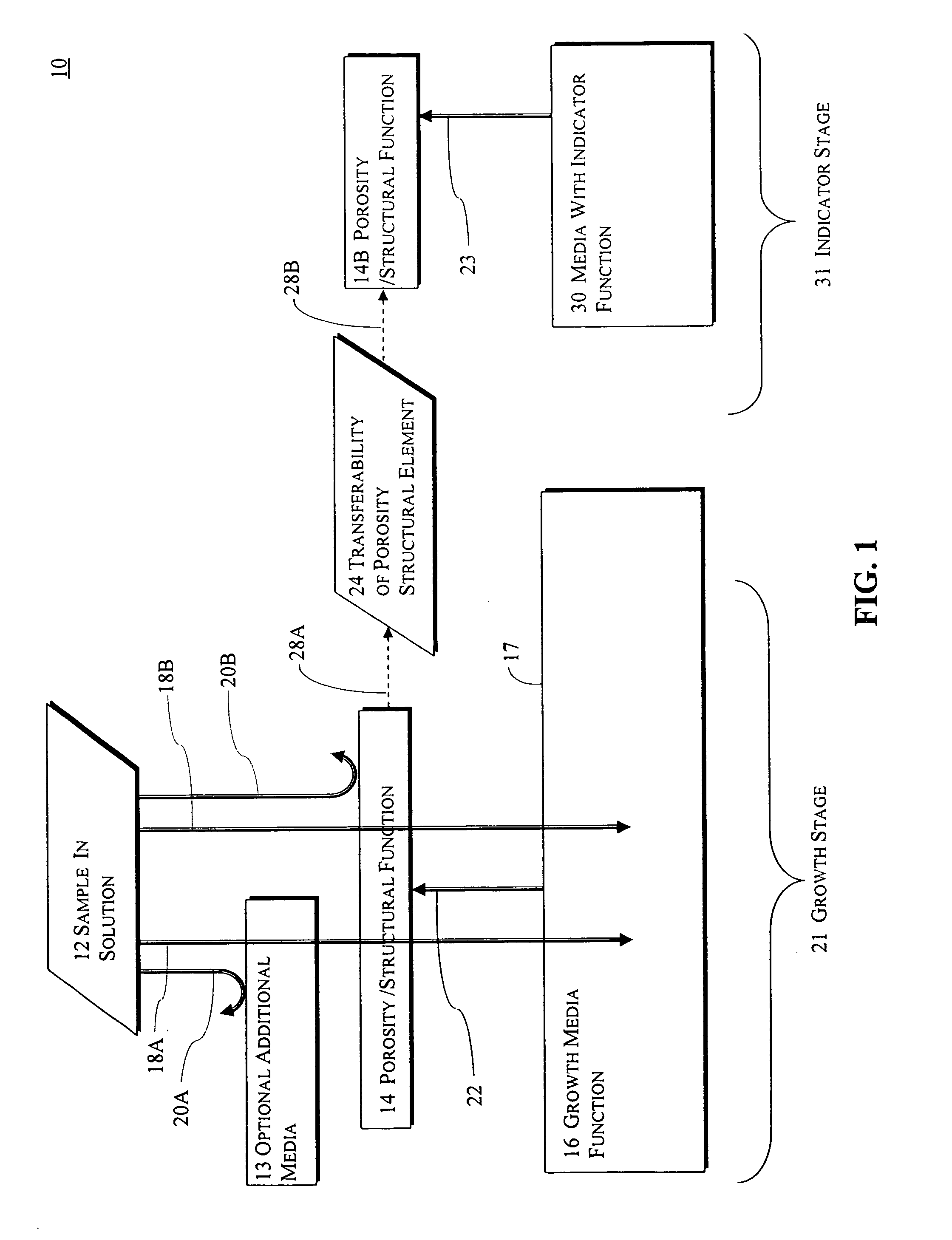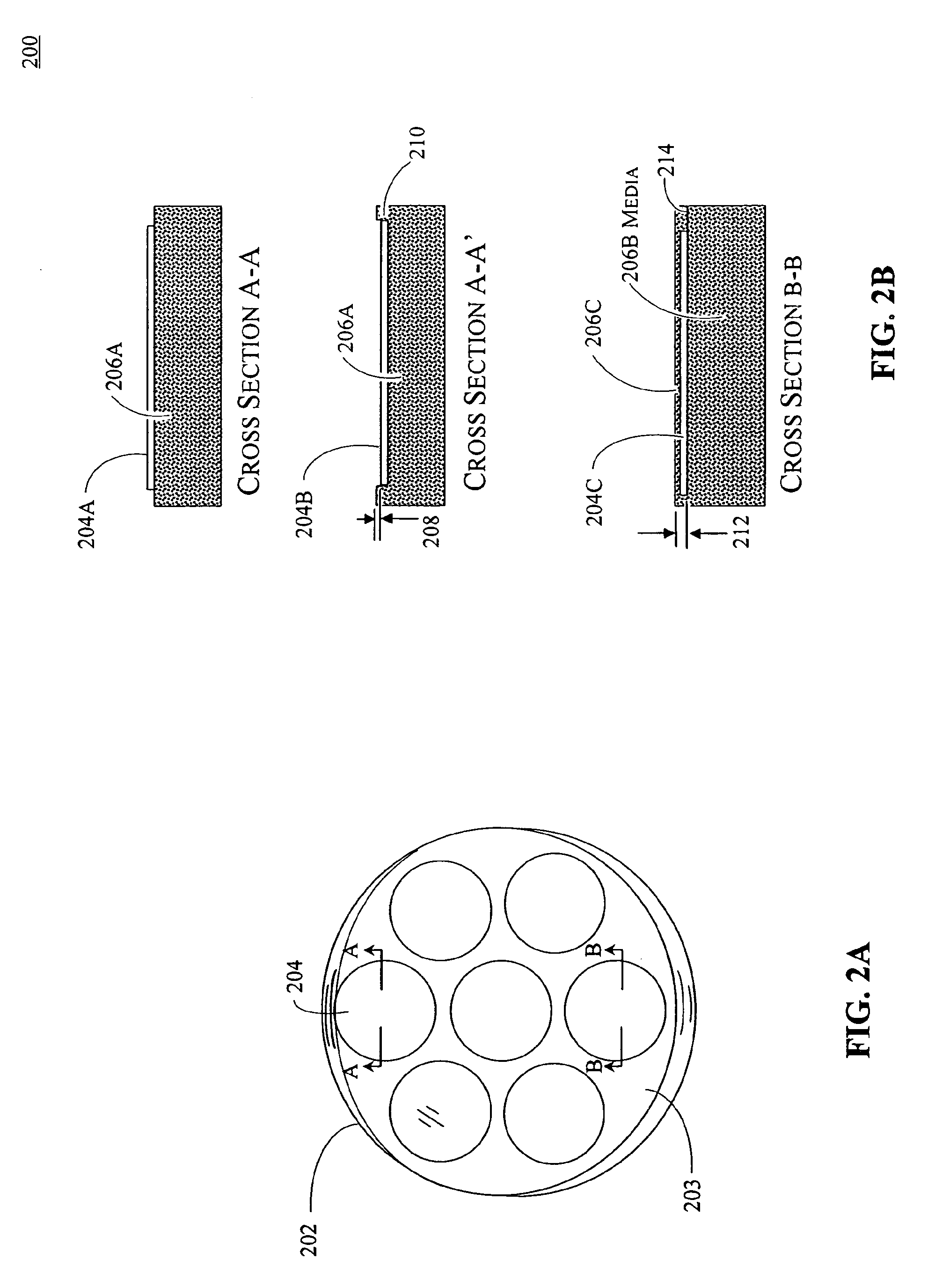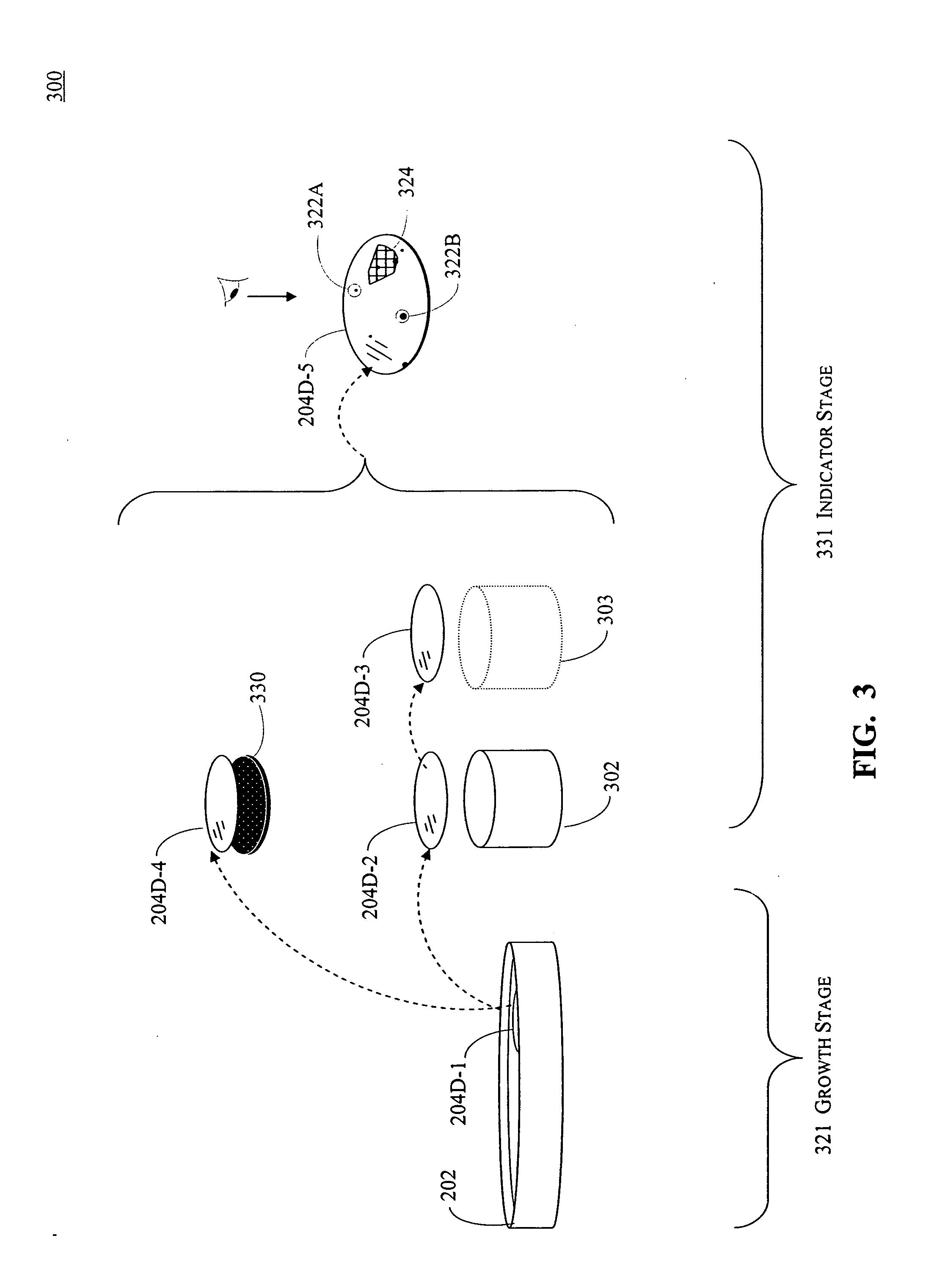Detection and Identification of Microorganisms on Transparent Permeable Membranes
- Summary
- Abstract
- Description
- Claims
- Application Information
AI Technical Summary
Benefits of technology
Problems solved by technology
Method used
Image
Examples
examples
[0052]Detection of total number of viable microorganisms (TVO) is one of the most needed laboratory procedures in the world. It shows the presence and level of microbial contamination in the food, biotechnological, environmental, and other industries. A regular TVO is conducted by doing several (3-12) 10-fold dilutions of a sample in buffer, liquid nutrient media, or 0.9% NaCl solution and then spreading one milliliter of each dilution on the surface of regular Petri plates filled with an appropriate nutrient agar. Plates are incubated 24-48 hours at 32-37° C. After this plates are removed from the incubator and colonies are enumerated. This procedure needs 3-12 tubes for dilutions, 3-12 Petri plates, and long term incubation. Results appear only after 24-48 hours. This simple procedure is repeated hundreds of millions of times worldwide each year. The method of the present disclosure, described herein is much faster (3-6 hours), does not require 10-fold dilutions, and needs only 1-...
fluorescent embodiment
[0055]Membranes used in the current method are made from regenerated cellulose, which is non-fluorescent and pellucid material. Nevertheless, nutrient media itself contains highly fluorescent substances. This restricts the use of a thin layer of nutrient media above the porous element, or membrane, as it was described in one embodiment. The recommended membrane in this case is a 100,000 Da dialysis membrane. The relatively large size of pores in this membrane allows satisfactory growth of microcolonies even without the thin layer, of media above them. Enhancement of humidity is also helpful in this embodiment because it creates more favorable conditions (microclimate) for microcolony formation. After 5-6 hours of growth, the membrane is removed to a secondary media filled with one or more fluorogenic substrates. For TVO detection, a freshly prepared mixture of 4-methylumbelliferyl phosphate and 4-methylumbelliferyl acetate in a concentration of 0.1 mg per mL of Acetone is used. This...
PUM
 Login to View More
Login to View More Abstract
Description
Claims
Application Information
 Login to View More
Login to View More - R&D
- Intellectual Property
- Life Sciences
- Materials
- Tech Scout
- Unparalleled Data Quality
- Higher Quality Content
- 60% Fewer Hallucinations
Browse by: Latest US Patents, China's latest patents, Technical Efficacy Thesaurus, Application Domain, Technology Topic, Popular Technical Reports.
© 2025 PatSnap. All rights reserved.Legal|Privacy policy|Modern Slavery Act Transparency Statement|Sitemap|About US| Contact US: help@patsnap.com



